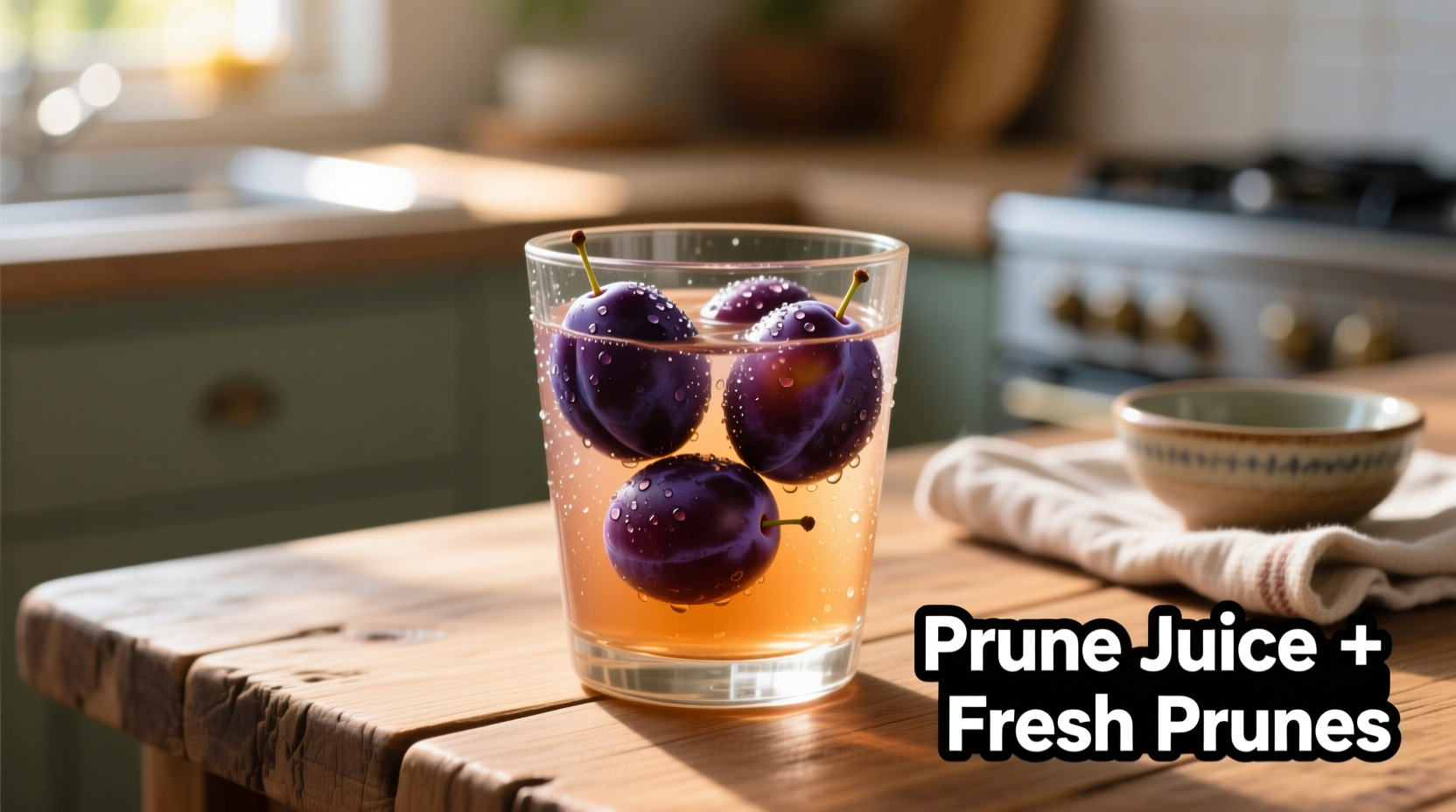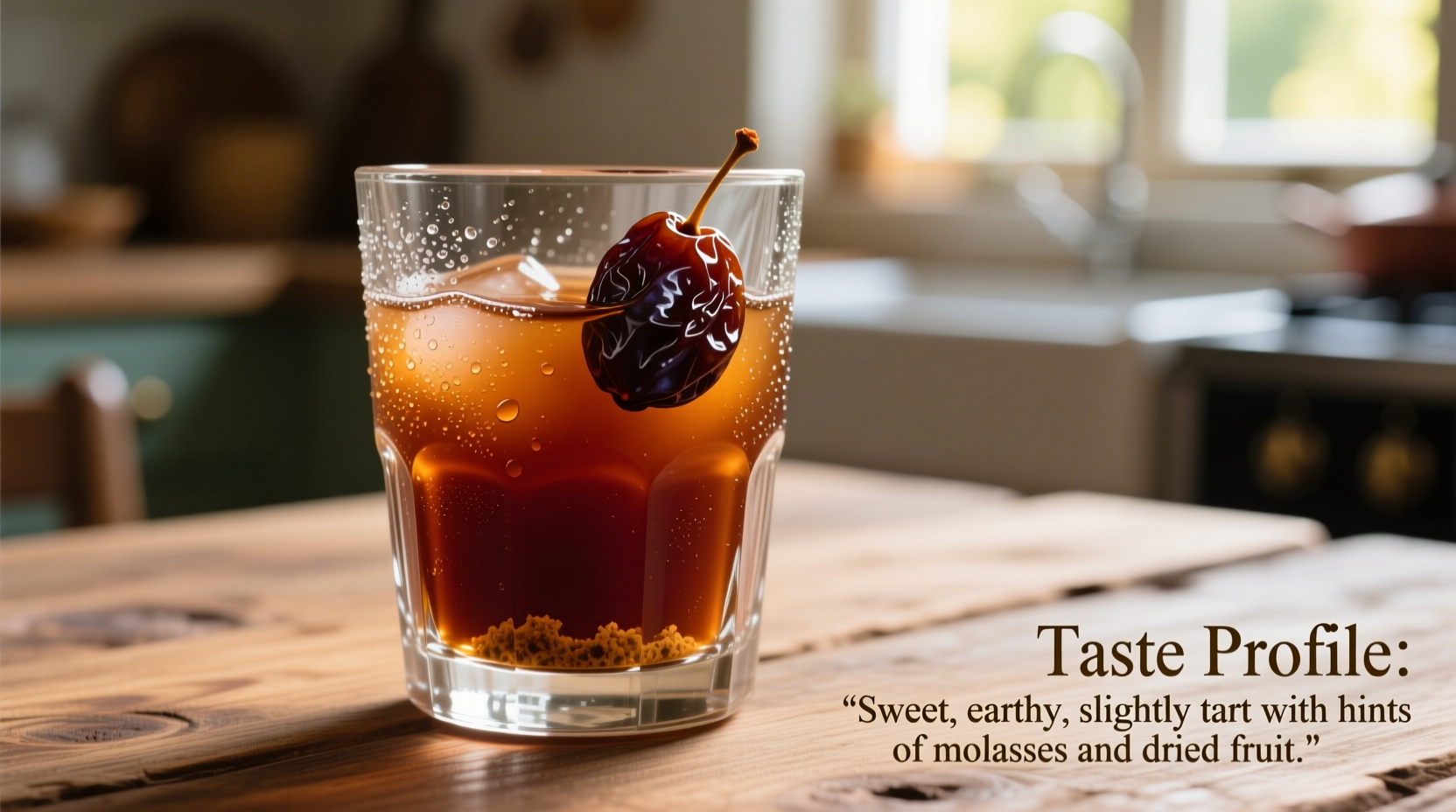Understanding Prune Juice's Distinctive Flavor
When you take your first sip of prune juice, you'll immediately notice its complex flavor profile that sets it apart from other fruit juices. Unlike the bright acidity of orange juice or the simple sweetness of apple juice, prune juice offers a sophisticated taste experience that combines multiple flavor dimensions.
Food scientists at the University of California, Davis have analyzed prune juice's chemical composition, identifying over 40 distinct flavor compounds that contribute to its unique profile. The dominant notes include:
- Sweet caramelized sugars from the natural drying process
- Tart malic acid that provides balancing acidity
- Earthy undertones reminiscent of dried fruits and autumn spices
- Subtle woody notes from the prune variety and processing method
Your Sensory Experience: What to Expect When Drinking Prune Juice
Before you even taste prune juice, you'll notice its deep ruby-brown color and rich aroma. The scent carries hints of raisins, figs, and a touch of toasted sugar. When you take that first sip, here's what happens:
Aroma: As you bring the glass to your nose, you'll detect warm, dried fruit notes with subtle hints of vanilla and toasted nuts. This aromatic profile directly influences your perception of taste.
Initial taste: The first impression is distinctly sweet, but not cloying. Unlike many fruit juices that hit you with simple sugar sweetness, prune juice offers a more complex, rounded sweetness with hints of molasses.
Middle palate: As the juice coats your mouth, you'll notice the tart component emerging. This isn't citrus-like acidity but rather a gentle, wine-like tartness that balances the sweetness perfectly.
Finish: The aftertaste lingers with earthy, almost smoky notes that some compare to dark chocolate or roasted coffee. This finish is why many people find prune juice more sophisticated than other fruit beverages.

How Processing Affects Prune Juice Flavor
Not all prune juices taste identical. Several factors influence the final flavor profile:
- Drying method: Sun-dried prunes develop deeper caramel notes compared to mechanically dried varieties
- Juice concentration: Higher concentration intensifies both sweet and earthy notes
- Additives: Some brands add apple or pear juice to mellow the flavor
- Prune variety: French prunes (the most common type) have a different flavor profile than Imperial or Italian varieties
According to research published in the Journal of Food Science, the drying process significantly impacts flavor development. Prunes dried at lower temperatures (140-150°F) retain more delicate floral notes, while higher temperature drying (170-180°F) produces stronger caramelized flavors.
| Juice Type | Sweetness Level | Tartness | Distinctive Notes | Best Paired With |
|---|---|---|---|---|
| Prune Juice | High (18-20g sugar/8oz) | Moderate | Caramel, molasses, earthy | Ginger, lemon, apple juice |
| Plum Juice | Moderate (12-15g sugar/8oz) | High | Berry-like, floral | Orange, mint, honey |
| Apple Juice | High (20-24g sugar/8oz) | Low | Clean, simple sweetness | Cinnamon, cranberry, ginger |
| Grape Juice | Very High (25-30g sugar/8oz) | Low-Moderate | Berry, jammy | Lemon, sparkling water, herbs |
Making Prune Juice More Enjoyable
If you're new to prune juice or find the flavor challenging, these practical tips can help you appreciate it more:
Natural Flavor Enhancements
Professional chefs often use these techniques to balance prune juice's distinctive flavor:
- Add citrus: A squeeze of fresh lemon or lime brightens the flavor and cuts through the earthiness
- Dilute with water: Mix with sparkling or still water (50/50 ratio) to reduce intensity
- Chill thoroughly: Cold temperatures mute strong flavors - serve well-chilled
- Add ginger: Fresh ginger complements prune juice's earthy notes beautifully
Gradual Introduction Method
Rather than drinking straight prune juice immediately, try this approach used by culinary professionals:
- Week 1: Mix 1 part prune juice with 3 parts apple juice
- Week 2: Mix 1 part prune juice with 2 parts apple juice
- Week 3: Mix equal parts prune and apple juice
- Week 4: Try prune juice with just a splash of apple juice
This gradual approach allows your palate to adjust to prune juice's unique flavor profile, making it more enjoyable over time.
Why Flavor Matters: Connecting Taste to Benefits
Understanding what prune juice tastes like isn't just about sensory pleasure—it directly impacts whether people incorporate it into their routine for its well-documented digestive benefits. Research from the American Journal of Clinical Nutrition shows that people are significantly more likely to maintain consumption of health-promoting foods when they understand and appreciate the flavor profile.
The natural sweetness of prune juice comes with substantial fiber content (about 2.6g per 8-ounce serving) and sorbitol, which contributes to its gentle laxative effect. Unlike artificially sweetened beverages, prune juice's sweetness comes with nutritional benefits including potassium, vitamin K, and antioxidants.
Many people initially try prune juice for digestive health but continue drinking it once they've learned to appreciate its complex flavor profile. The key is approaching it with the right expectations—it's not meant to taste like a candy-sweet beverage but rather offers a sophisticated flavor experience similar to fine wine or dark chocolate.











 浙公网安备
33010002000092号
浙公网安备
33010002000092号 浙B2-20120091-4
浙B2-20120091-4